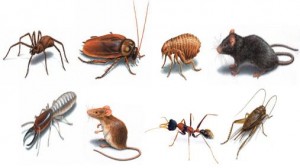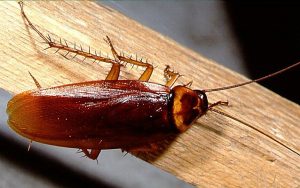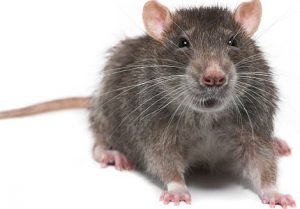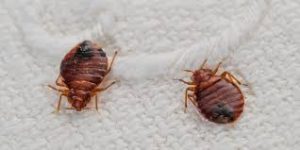
Common household pests
There are many different pests that can cause problems for homeowners. From insects to rodents, the animal kingdom is full of creatures that we’d all rather not share our homes with. Unfortunately for us, as our towns and cities expand we move into more areas that are already happily inhabited by these things we call pests, and we end up sharing space with them much more often than we’d like.
Below are six of the most common household pests that homeowners have to deal with:
Ants
Ants are quite possibly the most common household pest you’re likely to encounter. One species or another lives in just about every part of the world. In fact, they can be found anywhere on the planet with Antarctica being the only exception. There are estimated to be about 22,000 species of ants, which have existed on Earth for roughly 120 million years. These tiny workaholic pests are not going anywhere any time soon.
They are considered pests because of their tendencies to damage food, building structures, spoil sterile environments and damage crops. Some species of ants are also well known for being able to deliver a stinging bite.
Cockroaches
Cockroaches are a universally known household pest. Even with the wide variety of insects that can pop up in a home, it is cockroaches that seem to elicit the most disgusted and revolting reaction from most people.
Only about 30 of the more than 4000 cockroach species are associated with human habitats, with just four of those making up the list of cockroaches most commonly found in homes, but that’s still too many for the comfort of most people.
people.
Cockroaches are known for eating both human and pets foods. They can also create an unpleasant odor if their numbers grow. It has been proven that roaches can carry pathogenic microbes on their bodies as trigger symptoms of asthma and other allergic reactions in some people.
Flies
Few things can be as annoying as a fly buzzing around you as you try to go about your daily business. They’ll make it difficult to both work and relax.
Flies do not bite or directly infect humans like some other insects might. They have, however, been proven to be able to carry and transmit agents that will cause diarrhea, cholera, dysentery and eye infections.
Most common house flies are only capable of ingesting liquids, so they are most attracted to either liquid or fine solids like sugar or flour that they can liquify with their saliva before ingesting. This buzzing around foods has been shown to spread pathogens such as salmonella, which will cause food poisoning.
Rodents
Rodents present a unique pest problem for homeowners. They are, of course, usually much larger than insects and can create more damage. They are also found in just about every corner of the world.
Some species such as rats or mice can pose a direct threat to humans as they can carry and spread disease both passively and actively (through a bite). They can cause damage to food, litter areas with urine and droppings, and are generally considered a health hazard.
 Other species such as moles, voles, and squirrels will keep their distance from humans, usually only coming indoors by accident, but can cause great damage to lawn, trees and gardens.
Other species such as moles, voles, and squirrels will keep their distance from humans, usually only coming indoors by accident, but can cause great damage to lawn, trees and gardens.
Silverfish
Silverfish are small wingless insects with a silvery light gray color. They’re typically anywhere from ½ to 1 inch long and move mainly at night. They require very moist areas to survive, and are usually found in places like bathrooms or basements where the humidity level typically remains high.
Their main diet is carbohydrates and starchy substances. They are not a threat to humans, but if they go undetected they can cause great damage to stored items such as books or natural fiber clothing stored in cardboard boxes. Storage boxes in a damp basement make a perfect home for these pests.
Bedbugs
The reason for bedbugs being considered a pest is most likely obvious. Nobody likes the thought of bugs in their bed.
Bedbugs are a parasitic insect that feeds exclusively on blood. They have been known as human parasites for thousands of years but were considered to be eradicated in most developed countries by around 1940.
Reports of bedbugs have begun to increase starting around 1995. The reason is believed to be a combination of resistance to pesticides, governments outlawing many effective pesticides, and increases in international travel.

Stand Your Ground and Stay Vigilant
Keep your eyes open for these household pests. A good offense really is your best defense. Most infestations can be stopped fairly easily if they are caught quickly. If you notice any of these unwanted guests in your home, you’ll want to act quickly and take care of the small problem before it turns into a big one.

No Comments